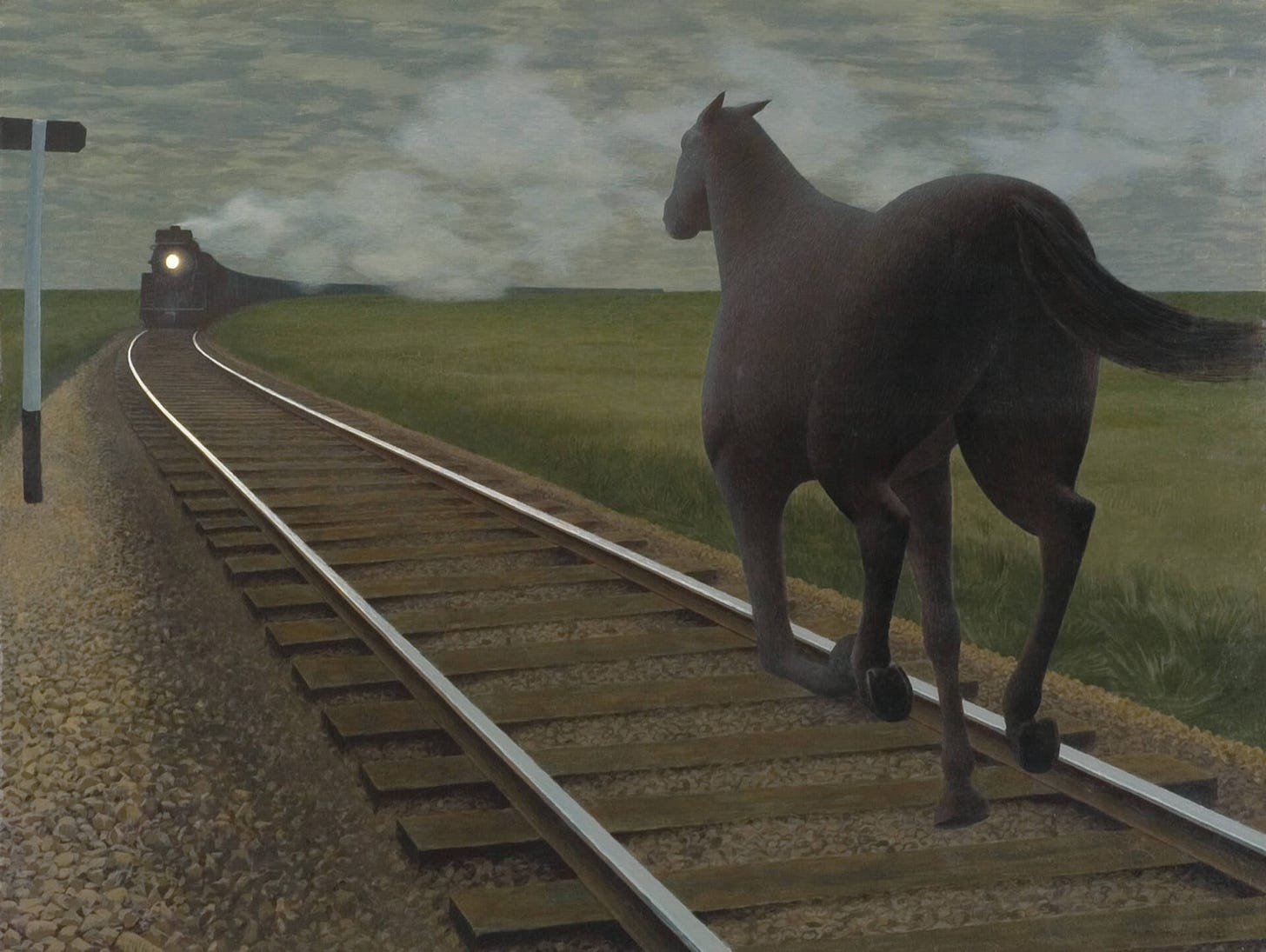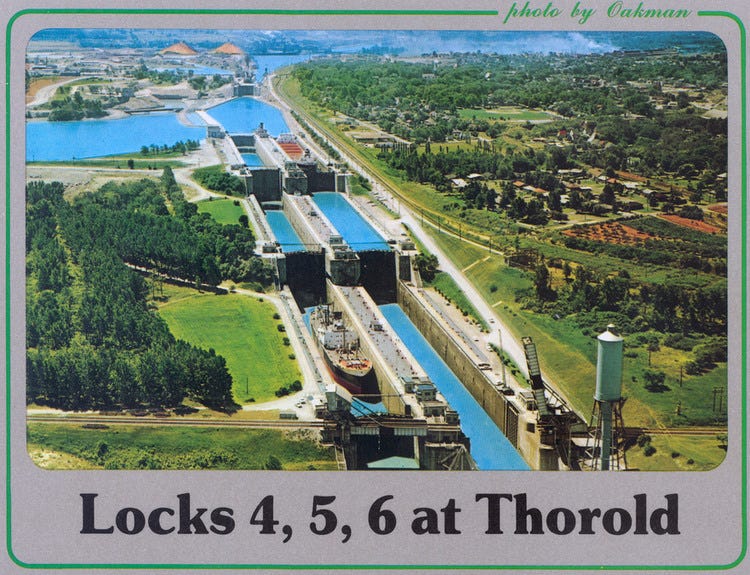What’s The Next National Dream For Canada?
Canada was built on an imagining of the future. But what happens when a country runs out of dreams?
The last great national project was the railway. That was 150 years ago. Since then? Canada has mostly apologized, regulated, and managed itself. A nation without purpose is just a bureaucracy with a flag.

What is Your National Dream?
We are what we build. And if we build nothing, we become nothing. Every great nation has a purpose, a shared project that binds people beyond politics, regions, and passing ideologies. If Canada is to be more than a bureaucracy with a flag, it must reclaim its ambition and give its people a mission worthy of their effort and ingenuity. So I ask you this question: What is your National Dream? If you could chart the next great chapter for this country—not just manage its decline—what would you build?
A Country Without a Mission
I’ve never been particularly patriotic. Nova Scotia entered Confederation reluctantly and spent decades trying to leave. We were the first separatists. Even today, I understand Nova Scotia—its scale, its people, its place. But Canada? It often feels like an unnatural alliance, five economies running at different speeds, stitched together by unresolved questions rather than shared purpose.
Patriotism comes from a sense of collective achievement. Strong nations unite around building something bigger than themselves. Weak ones unite around government handouts. Canada once had grand ambitions. The transcontinental railway. The wartime effort. The Saint Lawrence Seaway. Universal Healthcare. But for decades now, we’ve had nothing except bureaucratic drift and ideological lessons about redistribution, social restructuring, and identity-based policy.
When a country loses its sense of mission, its people stop thinking like builders and start thinking like beneficiaries. The government becomes the central thing itself—a self-perpetuating machine that absorbs more and more of the economy, culture, and ambition.
When We Rose Up
Compare this to when Canada actually built things: the railway that united a vast and improbable geography, the wartime effort that transformed industry and innovation, even the opening of the west, and the Alberta oil sands, an effort to turn inhospitable land into wealth. These were tangible achievements. What have we had since? A slow, steady descent into self-management.
If Canada feels empty, it’s because it is. And if regionalism is flaring up again, it’s not because people want to break apart—it’s because they’re searching for something real to belong to. When a nation fails to provide purpose, people retreat into their natural geopolitical tribes, political tribes, ideologies, provinces, cities, and their pasts - their identities that come before the “-Canadian” part. That’s not division for division’s sake—it’s survival.
The real question is: Can Canada be shaken out of this stupor? Is there a project, a goal, a vision that could actually pull people forward? Or are we past the point of even believing in such things?
The Great Canadian Corridor:
A New National Project
Imagine a single, unbroken corridor stretching from the Atlantic to the Pacific, —a multi-use national link integrating high-speed rail, inland shipping routes, water, energy, and resource transmission, digital connectivity, provincial trade, and an all-season multi-use trail system.
A LIVING UNIVERSITY
This project would be the work of a whole generation of Canadians where the work IS the education. Skills, apprenticeships, and learning happen on the job but lead to valuable degrees and certifications. A kind of living university and trade school with all the benefits of travel and networked connections to all kinds of people, places, and ideas. It would help more closely align the notion of work and our education system, and it would rise to meet the dramatic skills mismatch and rising unemployment in our workforce. Most importantly it would reinvigorate the connection between work and purpose in Canada.
This corridor would follow a path close—but not too close—to the U.S. border, reinforcing Canada’s sovereignty while unlocking economic and logistical opportunities for our largest cities, best industries, and most fertile regions.
THE GOAL?
A prosperous country in a peaceful world.
A Canada that can feed, clothe, supply, protect, and fix itself, with more than enough left over to help the world, and powerful distribution systems that supply the nation and the future.
At the same time, it would set the stage for a long-term vision of Canada’s northern expanse: not as a place of unfulfilled potential, but as a thriving natural landscape of abundance: rewilded ecosystems, protected wildlife, sustainable resource stewardship, and Indigenous-inspired land management.
This dual vision—purposeful and prudent development in the south, conservation, and regeneration in the north—would position Canada as a world leader in responsible growth, energy security, and environmental harmony, while giving every generation of Canadians a new way to connect with their country, its land, and its future.
This vision takes Canada back to its national origins and the best ideas that have brought our country a level of prosperity unprecedented in world history—back to the bold ambition that first stitched this country together and united a continent. The National Dream of the 19th century was a railway, a connection across an unknown land to unify a young nation. But Canada has outgrown that singular thread. The 21st-century version of that dream is woven bigger, broader, smarter, and built for a new era—a multi-modal corridor of rail, water, energy, travel, trade, and digital infrastructure that redefines how we connect, move, and grow.
It’s a return to the pioneering spirit that made Canada possible but with the wisdom to balance development with conservation, economic strength with ecological responsibility, and a real physical embodiment of national unity.
This is not just a project—it’s a renewed declaration of what Canada can be.
POSTSCRIPT: Trump
The idea that a common enemy unites people is as old as politics itself, but it comes with serious risks—especially when the enemy is external, distant, and more symbolic than real. Canada’s newfound fixation on Donald Trump as a political bogeyman is a case in point.
Canada has plenty of homegrown issues—housing affordability, economic stagnation, government bloat, declining productivity—but focusing on Trump provides an easy way to avoid confronting them. If the national conversation is consumed by his antics, policies, or legal troubles, then we don’t have to ask why our own leaders seem to lack vision or competence.
Opposing Trump might make Canadians feel morally and politically united, but it’s a cheap kind of cohesion. It’s like bonding over hating a sports team you never play against. Real unity comes from shared purpose, from building something—not from agreeing on what we dislike.
The real question isn’t what Trump is doing. It’s what Canada is doing. And right now, the answer isn’t much.






Unlike the American promise to secure for its people "life, liberty, and the pursuit of happiness", the Canadian promise has been "peace, order, and good government", and Canadians have concluded that two out of three ain't bad.
Your vision of reconstruction and renewal is an attractive one, but I can see the government giving the contract for the work to SNC-Lavalin, with predictable results.
So I'm not so sure nationalism is ultimately the way to go anyway. But in the spirit of your post, quantum computing, both the chips and the underlying programming language we'll need to make use of them.
It's kind of a hidden gem but Canadian computer science is top notch and some of the investment in quantum computation has resulted in some of the first quantum annealers (chips that perform a subset of what true quantum chips should be able to do). The upside of this technology could be unbreakable information security, "instant" communication outside our gravity well (i.e. between planets), the ability to structure and restructure proteins at whim (genetic engineering on the fly), etc. Of course, that's currently the "fiction" part of science fiction but the potential that this could be the next foundational science in the next plateau of human evolution is there.
Already Canada has centres in Vancouver, Toronto and Montreal but people from Calgary like James Gosling (who developed Java) are huge influencers too. It has the added bonus that most of the work can be carried out piecemeal from different parts of the country at a desk, although the chip making needs a full fancy physics lab or two (and we have some!).